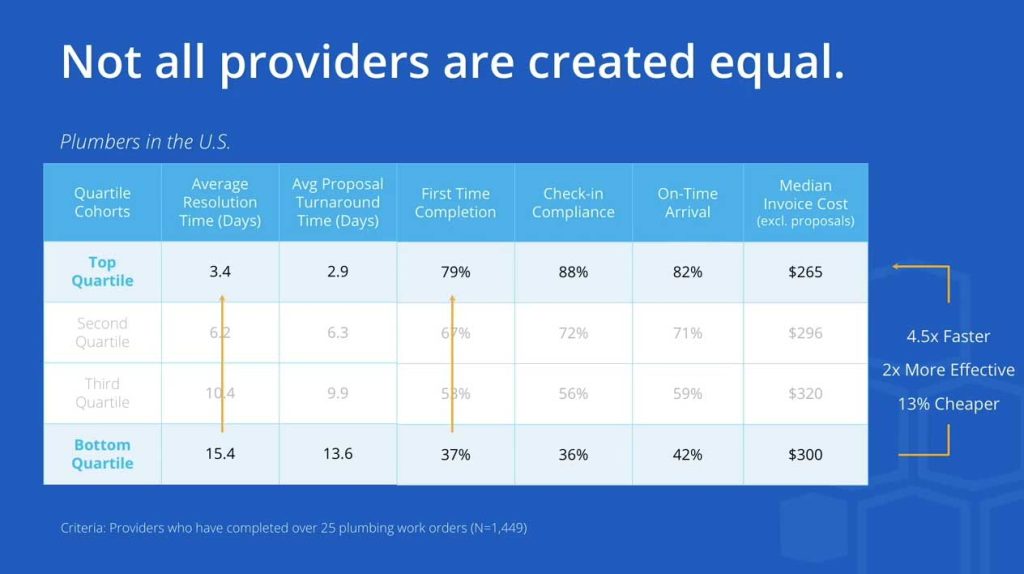How to Implement Effective Maintenance Inventory Management

Discover how smarter maintenance inventory management can reduce costs, prevent downtime, and improve performance across every facility you manage.
Every maintenance program depends on one critical resource: the right parts, in the right place, at the right time. Even the best maintenance programs grind to a halt without the right parts on hand. Stockouts lead to delays, equipment downtime, and frustrated teams. Overstocking drives up costs and eats up storage space. It’s a balancing act that many organizations struggle to manage effectively.
Without reliable access to supplies, even the most skilled maintenance teams face avoidable delays, rising costs, and frustrated stakeholders. Effective maintenance inventory management helps avoid these issues. By gaining visibility into your parts, tools, and supplies, your organization can reduce downtime, lower expenses, and enhance asset performance across all locations. Whether you manage a single facility or a national portfolio, a well-organized inventory management system lays the foundation for long-term efficiency.
Whether you oversee a single site or manage operations across multiple locations, having a structured inventory management process helps reduce costs, increase reliability, and support long-term asset performance.
What Is Maintenance Inventory Management?
Maintenance inventory management is the practice of organizing, tracking, and restocking the parts and supplies needed to support ongoing maintenance operations. It combines physical stock control with data-driven planning to reduce waste, prevent stockouts, and improve reliability across your facilities.
Maintenance inventory management revolves around three core pillars:
- MRO Inventory: Maintenance, Repair, and Operations (MRO) inventory comprises tools, spare parts, and consumables required to maintain and operate your equipment. Managing this inventory effectively helps prevent unplanned downtime and avoid expensive emergency repairs.
- Strategic Oversight: Instead of guessing at reorder points or hoarding extras just to be safe, smart inventory programs use real data to guide stock levels, purchasing, and reallocation.
- Cost Control: A robust computerized maintenance management system (CMMS) with integrated inventory management capabilities helps reduce over-purchasing, eliminate obsolete stock, and optimize the use of storage space.
Together, these elements form the backbone of a more efficient, responsive, and cost-effective maintenance strategy.
Why Maintenance Inventory Management Matters
A well-run maintenance inventory program involves more than just keeping your shelves organized. It directly supports maintenance efficiency, cost savings, and asset reliability. Without it, teams lose valuable time chasing parts while budget overruns and equipment downtime quietly accumulate.
Here’s what a strong inventory management strategy can help your team accomplish:
- Prevent unplanned downtime
- Reduce waste and overspending
- Streamline maintenance workflows
- Improve asset utilization
- Support long-term maintenance planning
With the right processes in place, facility and maintenance managers can more accurately predict what parts are needed, when they’re needed, and in what quantities. That means fewer surprises, smoother operations, and a more resilient maintenance program overall.
Laying the Groundwork for Smarter Inventory Practices
Good inventory management habits don’t happen by accident. They’re built on a foundation of clear processes, the right tools, and an accurate view of what’s on the shelf. Before your team can improve inventory control, it helps to take a step back and assess how things are working today.
Step 1: Assess Your Current Inventory System
Before you can improve inventory control, you need a clear picture of what you’re working with. That starts with a comprehensive audit of your current maintenance inventory system, including identifying which parts you have on hand, where they’re stored, and how frequently you use them. Many facilities rely on outdated methods, such as spreadsheets or handwritten logs, which can lead to human error and result in missing supplies and inconsistent stock counts.
Many facilities management software systems include inventory and maintenance management modules, making this process far more efficient. Additions like MRO inventory or spare parts inventory management tools can help you track usage patterns, flag excess or obsolete stock, and consolidate fragmented records.
Tip: Map your inventory
Either digitally or on paper, create a visual outline of stock locations. This makes it easier to spot duplicates, reduce wasted space, and locate parts faster when they’re needed.
Step 2: Set Accurate Stock Levels and Reorder Points
Once you know what you have in stock, the next step is setting thresholds for what to keep and when to reorder. Effective inventory control depends on knowing your ideal inventory levels so you don’t overstock low-use items or scramble to source critical spares at the last minute.
An ideal parts inventory system should allow you to define minimums, maximums, and safety stock levels for each item. Use data from audits to track consumption rates, supplier lead times, and seasonal demand. These patterns will help calculate realistic reorder points and reduce costly surprises.
For organizations with multiple locations, standardizing reorder points across sites can prevent duplicate purchases and ensure critical parts are always available where they’re needed most. With this coordination, facilities avoid the risk of over-purchasing some items while falling short on others, which can up costs and contribute to unplanned downtime.
Tip: Use data to prevent stockouts
Instead of guessing, use past usage trends and delivery delays to set smart reorder triggers. Even a basic formula such as (average daily usage × lead time + safety stock) can help you maintain the right inventory without overloading your shelves.
Step 3: Use Tech to Automate and Integrate
Manual tracking systems may be suitable for small operations, but they can quickly become too complex to manage effectively when teams must juggle hundreds of parts across multiple sites. Automating your inventory processes saves time, reduces human error, and provides cleaner data for informed decision-making.
Look for tools that combine inventory and maintenance operations within a single system. A centralized platform makes it easier to manage inventory data, share updates across locations, and connect your inventory counts to work orders and scheduled repairs.
Tip: Integrate with preventive maintenance
By linking your parts inventory to your preventive maintenance plan, you can forecast supply needs more accurately and avoid last-minute rush orders. Additionally, mobile access allows maintenance teams to check stock levels, update inventory counts, and close out maintenance tasks on the spot. That real-time synchronization between the shop floor and the system helps reduce human error and improves overall maintenance efficiency.
Best Practices to Sustain Performance
With a maintenance inventory system in place, the next challenge is keeping it sharp. The key is prioritizing maintenance, which means shifting from reactive fixes to proactive planning. With proactive preventive and predictive maintenance strategies, clean data, clear procedures, and consistent routines will help keep your program running at peak performance.
Real-time visibility and budget-consciousness are key players when it comes to aligning your inventory management strategy with your company’s goals. Here are some proven best practices to help your organization achieve its objectives while also supporting the long-term health of its assets. These best practices support both day-to-day efficiency and longer-term strategic planning, giving maintenance managers the tools they need to adapt to shifting budgets, regulations, and equipment lifecycles.
1. Create Clear SOPs for Inventory and Maintenance Activities
Standard operating procedures (SOPs) help eliminate guesswork and reduce inconsistencies across maintenance teams and shifts. Whether it’s how to receive deliveries, log usage, or track replacement parts, having documented procedures ensures that teams follow the same standards from site to site. SOPs are also crucial in supporting regulatory compliance and training new team members.
2. Align Inventory With Asset Lifecycle Management
Inventory planning should go hand-in-hand with the expected lifecycle of your equipment. As assets age, their needs change, and your supply strategy should reflect that. Aligning your inventory with asset lifecycle stages allows you to stock critical spares when failure risk is high and reduce surplus when an asset is nearing retirement.
3. Prioritize Preventive Over Reactive Maintenance
Facilities that rely heavily on reactive repairs tend to carry more inventory for emergencies, resulting in inflated inventory levels and increased obsolete stock. By focusing on preventive maintenance, your team can predict which supplies will be needed and when, reducing emergency orders, rush shipping costs, and wasteful spending.
4. Monitor Depreciation to Improve Financial Planning
Your parts inventory may include high-value components that lose value over time. Monitoring changes in your equipment’s value can help finance and maintenance teams coordinate when to repair, replace, or retire assets and how to budget accordingly. Tracking equipment depreciation also provides visibility into how inventory aligns with your broader maintenance program.
5. Use KPIs to Measure Inventory and Maintenance Performance
Key performance indicators (KPIs) help maintenance managers spot patterns and make smarter decisions. Common inventory KPIs include stock levels, inventory turnover, and critical spare availability. On the maintenance side, key metrics typically include tracking asset downtime, maintenance activities, and part usage trends. Visibility into these indicators can reveal where inventory gaps and maintenance practices are disrupting operations and where there’s room to improve.
A data-informed inventory strategy does more than just prevent downtime from searching for the right maintenance supplies and spare parts. It gives teams the visibility and control they need to make smarter, faster decisions at every stage of the maintenance cycle. With accurate counts, real-time usage data, and the right inventory levels in place, your facility can reduce waste, eliminate guesswork, and stay ahead of unplanned disruptions.
For goods manufacturers, this kind of structured approach also strengthens the supply chain, helping avoid rush shipping and stockouts while improving supplier coordination. Over time, organizations that prioritize inventory and asset visibility tend to see lower maintenance costs, greater operational efficiency, and better long-term planning across the board.
Get Ahead With Smarter Maintenance Inventory Management
Effective inventory management is key to building a stronger, more responsive maintenance operation. With the right tools and practices, your team can enhance accuracy, lower costs, and remain prepared for whatever the workday brings.
From clear SOPs to integrated platforms and proactive planning, a smarter inventory strategy can support better decision-making across your entire organization. When inventory and maintenance work together, the result is less downtime, more visibility, and greater control over your assets.
Take the next step and schedule a demo to see how ServiceChannel can help you transform your inventory and maintenance operations.



